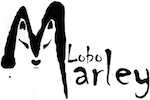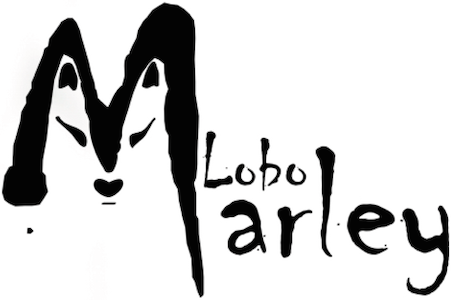Canis lupus, the Iberian wolf, is making a comeback in Portugal and Spain
Seven in the morning on a midwinter day in the Sierra de la Culebra, a remote mountain range in the province of Zamora, where Spain turns a corner into northeast Portugal. The sun comes up reluctantly over a landscape that a heavy frost has turned a ghostly white, as if in fright.
You might argue that there are better places to be at dawn on a Saturday morning than this nearly treeless heathland where the temperature hovers a few degrees below zero. Yet here we all are, lined up behind our telescopes, a group of nature-freaks in layers of wool and Gore-Tex, peering into the far distance. The silence is dense with anticipation.
We have come, mostly from Catalonia and the Basque Country, to take part in a weekend event dedicated to the observation of the Iberian wolf Canis lupus, a species that after decades of near-extinction is at last making a comeback in certain out-of-the-way corners of the peninsula, like this bleakly beautiful sierra hanging off the western edge of Spain.
La Culebra is an expanse of rolling country, much of it protected as a hunting reserve covering 67,340 hectares, whose harsh climate and poor soil have caused several generations of locals to leave. The village of San Pedro de las Herrerias – whose Veniata rural tourism centre was the venue for last month’s weekend wolf-fest, with talks on conservation, culture and lore, and guided sightings – currently registers a total population of just eight.

The Sierra de la Culebra – the name means “snake mountains”, referring to their undulating topography – is the setting for a volte-face in the sometimes awkward relationship between rural society and wild nature. Traditionally the wolf has been the sworn enemy of the livestock farmer and shepherd, Spanish country lore holding that the only good wolf was a dead wolf. But in a drastically underpopulated area with few resources, the novel concept of “wolf tourism” is being greeted as a welcome, if radical step.
To say that the wolf suffers from a bad reputation is like saying the great white shark isn’t everyone’s favourite fish. European mythology is thick with references to the predator. For much of its history, Spain’s economy depended on sheep farming, so it’s easy to see why the wolf might have been public enemy number one. But this doesn’t explain the heady mixture of hatred, awed respect and superstition that surrounds the animal. In Galicia, it was believed that the seventh-born male son was a likely werewolf, and the lobao, in Castile, was a persistent cough believed to afflict an infant that had seen a wolf pass by. In some parts of Spain it was forbidden even to mention the L-word (lobo), as if even that might be enough to attract it.
One morning our group visits the village of Lubián, at the western end of Zamora where it borders on Galicia, to see a stone-built wolf trap (last used in 1960), at the centre of which a goat would have been tethered as bait. When a wolf fell into the trap, it would be tortured and paraded around the village as a grisly trophy.
There have always been wolves in Spain. Tales of Twilight-style encounters are within the memory of most elderly folk in rural areas. The species once roamed the peninsula from the Mediterranean coast to the forests of Galicia, before urban development, motorway building, forest fires, habitat destruction and merciless persecution nearly put paid to it. At its lowest point in the 1970s, estimates Javier Talegón, a guide and lecturer at the wolf weekend, numbers may have been reduced to a few hundred.

Wolftracks in soil
But in the past decade the tide has begun to turn. The wolf has returned to Asturias. It has been spotted in Segovia and Guadalajara, and as far south as Extremadura. There is also evidence of a population in the Pyrenees, and even in the mountains near Madrid. An accurate headcount is nearly impossible, but figures of between 1,700 and 2,260 have been quoted for Spain and Portugal combined.
The wolf has joined the Cantabrian bear and the Iberian lynx, both still highly endangered but holding steady, as one of Spain’s “star” animal species. Nature lovers both Spanish and foreign have been known to “collect the set”, travelling to Asturias to see bears, followed by Sierra Morena for the lynx and Zamora for the wolves.
And nowhere has this kind of eco-tourism been more successful than the Sierra de la Culebra. If the region of Castilla y León has more wolves than anywhere else in Spain, with 60 per cent of the total population, Zamora is undoubtedly the heartland of the species and La Culebra, with its relatively high density of five wolves per 100 sq km and its wide vistas, may be the best place in Europe in which to observe them.
The wolf’s success story here has as much to do with demographics as conservation per se. Rural society has declined, and the wolf population has risen. As shepherding becomes a marginal activity, attacks on livestock are less common than they used to be. The 10 wolf packs currently inhabiting the reserve have more than enough deer, boar and rabbit to prey on to keep them from the flocks, and local shepherds have partially relaxed their formerly harsh opinions. “You say you’ve come to see wolves and they say, good for you, there’s a lot of them about. They might even be a bit pleased that you’re interested in local customs,” says Sergi Garcia of Barcelona-based conservation group Galanthus, organiser of the wolf-weekend.
Antonio Navarro, owner of Veniata, has been a witness, as well as a beneficiary, of changing attitudes towards the wolf. Navarro, a former economist with Spain’s biggest energy companies, retired in 2005, looking for the quiet life in back-of-beyond Zamora. What he could not have foreseen, when he opened his rustic lodgings, was that the wolf would become the pillar of his business. Since Veniata’s first wolf-related activity in 2007, says Navarro, as much as 70 per cent of his clientele has come exclusively to see wolves. Despite what he describes as the “indifference” of Castilla y León’s regional government, which continues to allow wolf-hunting in the region, Navarro believes that tourism based on live wolves, rather than dead ones, could make a major impact on the economic wellbeing of the area.
Down in Veniata’s lecture room, where the group convenes between sightings and excursions, Garcia says that almost half of all visits to the area are attributable to the “wolf effect”, and a dozen new turismo rural establishments have opened in the past 10 years. With the value of this new form of tourism estimated at around €176,000, the wolf is in effect an important generator of profit.
The following talk focuses on natural history. Wolf poo is handed round in a freezer bag; skins and skulls are examined. Javier Talegón, Zamora-born and a passionate defender of the species in its wild state, shows us grim images of wolves he has found poisoned, trapped and bludgeoned to death. Despite the changing attitudes, it seems that old hatreds die hard.
 ©Paul Richardson
©Paul Richardson
The wide vistas of the Sierra de la Culebra, where tourists come to observe the wolves
That afternoon we head out again to the vantage point, where the temperature has plummeted. The huge panorama of the moorlands, with the snowy Sierra de la Cabrera in the distance, would be worth the detour even if there were no rare wild animals on the agenda. As it is, I am beginning to lose hope of seeing them, and lose feeling in my feet.
Then a golden eagle is seen perching on a crag. A group of roe deer, grazing nearby, appears nervous. A whisper goes up from one of the Catalans. He has spotted a pack at some two kilometres’ distance. A dozen telescopes swivel and zoom as one. It is a family group, says Javier, formed perhaps of an adult and several youngsters from last spring’s litter.
The animals are grey-brown and grizzled. They could not be dogs: they are thicker-necked and thicker-coated, the face unmistakably vulpine, eyes piercing. Trotting through an open field, they stop at the slightest sound, evaluating the danger. The atavistic thrill of the sighting seems to reach back deep into the history of our species – and of theirs.
Fuente noticia Financial Times




